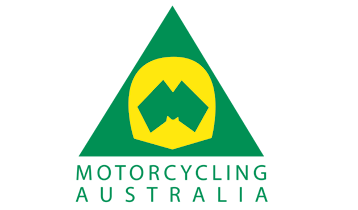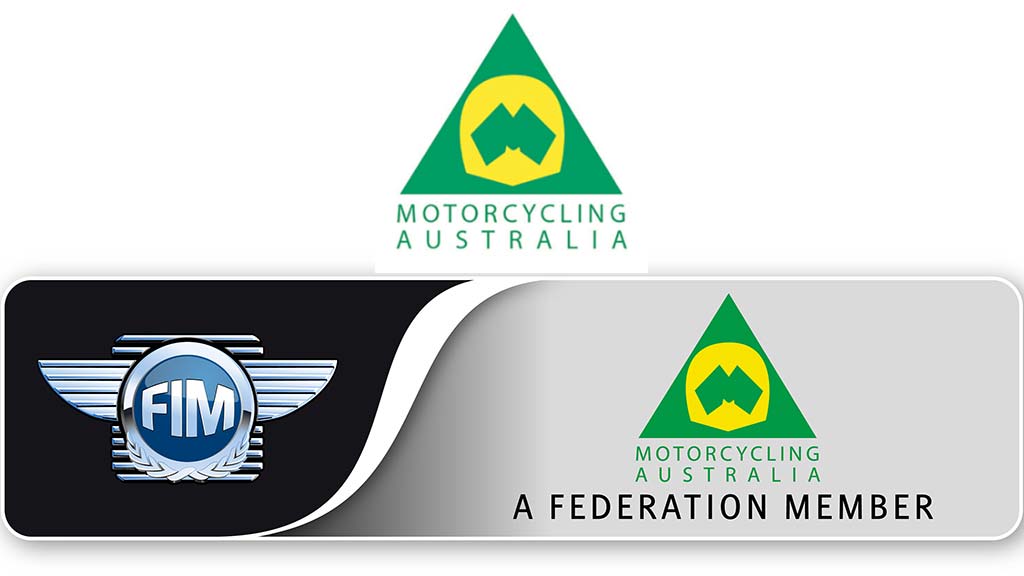Turmoil strikes again at Motorcycling Australia
M.A. President Tania Lawrence steps down after states demand her removal
By Trevor Hedge
It seems that the current power struggle between the individual state bodies, and the Motorcycling Australia board, has caused the M.A. board to commission a survey.
The board has been trying to implement the recommendations brought about by the extensive M.A. Whole of Sport Review paper, as soon as practicable.
The effective restructure of the organisation has been met with caution from the state bodies, who, while agreeable to an alliance agreement, and new funding model, have adopted a more cautious approach as they work towards to its implementation. Thus the timing of moves to effectively reinvent the way Motorcycling Australia does business has caused some friction between the board and the states.
And, contrary to popular opinion, it is the state offices that effectively control what Motorcycling Australia does. They hold the purse strings, and they also have the power to fire board members where they see fit. This is another, entirely predictable, point of friction between state bodies and the Motorcycling Australia board.
Last November, 2015, state bodies requested that a national financial funding group be formed. It is a current focus of business right now for a draft model to be decided upon, that effectively guarantees financial stability for the national strategy to move forward, and M.A. head office to be properly funded.
Over a month ago, the state representatives demanded the resignation of current Motorcycling Australia President, Tania Lawrence, from her position as President. An offer was made to allow Mrs Lawrence to remain on the board, and also to remain as the FIM Oceania representative, but they wanted her out of the office of President. If her resignation as President was not received by Monday just gone, August 29, the states had served notice that they would start official proceedings to have her removed from that office. Despite most of the other board members indicating to the states that if Mrs Lawrence was removed they would resign en masse with her, the states did not back down, as they saw her continuing in the role as completely untenable. Eventually Mrs Lawrence acquiesced, and stood down from her position over the weekend.
It is unclear as yet how many other board members will leave with her. This has serious ramifications in regards to corporate governance that has not gone unnoticed by the Australian Sports Commission.
Motorcycling Australia, as a national body, were almost bankrupt late last year, with only $7000 remaining in funds, and massive liabilities overdue to the M.A.I.L. insurance arm amounting to more than two million dollars. Staff entitlements and tax obligations had also not been met.
Well over $500,000 has been lost running the Australian Superbike Championship across the past two seasons. Add to that the costs of running international team events, such as the ISDE, Speedway Teams, World Junior Motocross, Trials Des Nationes and MXoN, and that overall budget then extends out to over a million dollars.
The state bodies would have certainly bailed out the national head office to ensure the bankruptcy did not eventuate, but it underlines the currently unviable model that Motorcycling Australia now operates under.
Things have been stabilised since then, as the current board, new acting CEO Peter Doyle, and Motorcycling Australia staff, have uncovered the abysmal accounting and business practices that were rife throughout the office in previous years. Steps have been taken to try and right what was a rapidly sinking ship.
There has also been much talk of some state bodies effectively splitting from Motorcycling Australia to go it alone, as their own independent governing bodies. Under that plan, the individual State body would retain their own assets and funds for the benefit of their own state members. A state going it alone would then obtain their own insurance cover and administer the sport in their own state as they saw fit, without having to answer to, or fund, any overall national controlling body.
In consultation with the state bodies they have assured me that is not the case, but the rumours surrounding this possible option, particularly in regards to NSW, have long been a subject of conjecture. And if any state was to leave first, it would almost certainly be NSW.
This is effectively a power struggle. With the national controlling body wanting more direct access to member fees and state assets. In doing so there should be great financial savings to be made by slimming down the organisation as a whole, on a national level, where many of the state roles and back office support staff could be done away with, as more duties were then transferred to the one national office that would then streamline the coordination of licensing, permits, and various other tasks that currently are undertaken by individual states.
On the other hand, some of the states feel that they have managed their finances and offices well, while witnessing the national office mismanage both monies and assets. Thus they fear that if they hand over their assets and direct access to permit fees etc. they will be lost forever.
Motorcycling Australia board members and state representatives have recently been in mediation talks, facilitated by the Australian Sports Commission.
In the interim the board have commissioned the following survey to hear your response as to how best you think Motorcycling Australia should move forward.
While the survey structure certainly leads participants towards an agreement heading towards a unitary model of doing business, nationally, it seems that both the board and the state bodies are in agreeance that is where they want to end up. Currently, however, they can’t agree on the method and timeframe to get there.
Motorcycling Australia Survey – Have your say by clicking here

Motorcycling Australia Survey – Have your say by clicking here























